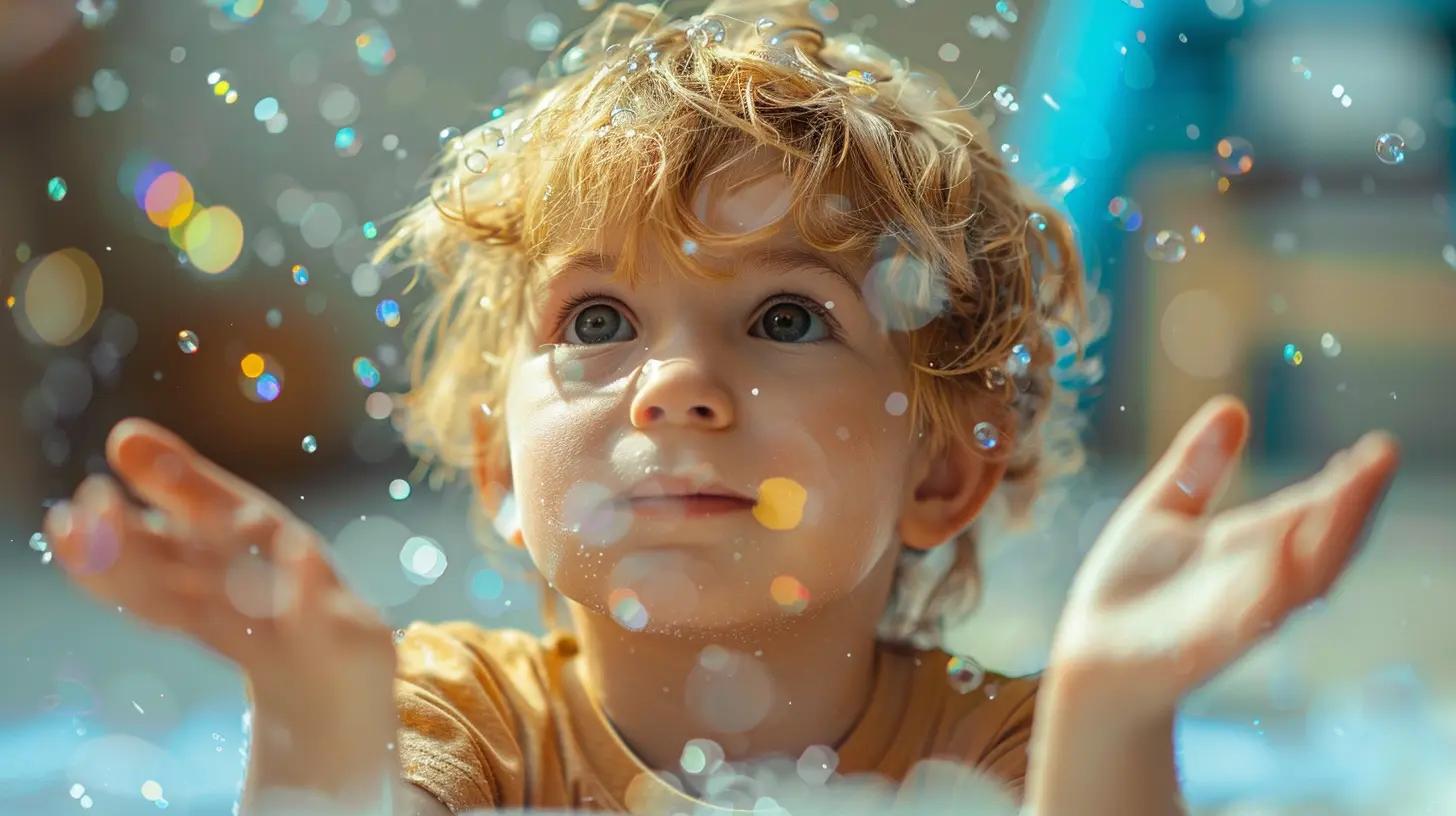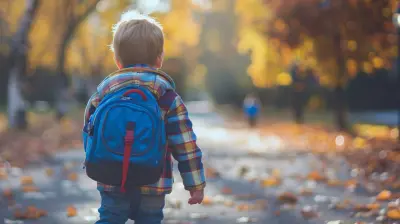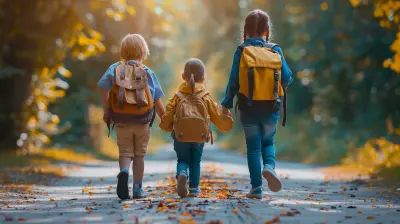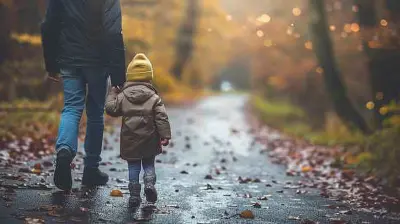How to Spark a Child’s Sense of Curiosity and Exploration
29 May 2025
Children are naturally curious creatures. From the moment they open their tiny eyes to the world, they begin a lifelong journey of exploration. Ever noticed how toddlers constantly ask "Why?" or how they eagerly touch, taste, and examine everything around them?
This innate curiosity is the foundation of learning, creativity, and problem-solving. But in today’s fast-paced world, where screens often replace hands-on experiences, fostering a child’s curiosity requires a little extra effort.
So, how can we nurture a child’s sense of wonder and encourage them to keep exploring? Let’s dive in!

Why Is Curiosity Important for a Child’s Development?
Curiosity isn’t just about asking questions—it’s a powerful tool for learning. When kids are curious, they become active participants in their own education. They’re more likely to:- Retain information because they seek out answers themselves.
- Develop problem-solving skills by figuring things out through trial and error.
- Enhance creativity as they think outside the box.
- Build confidence because they trust their ability to learn.
A curious child isn’t afraid to make mistakes; they see them as stepping stones rather than setbacks. In essence, curiosity shapes a child’s ability to understand the world around them while developing critical life skills.

How Can You Spark a Child’s Curiosity and Love for Exploration?
Curiosity isn’t something you force—it’s something you nurture. Here are some simple but powerful ways to encourage a child's natural sense of curiosity and exploration.
1. Encourage Questions (Even the Endless Ones!)
Kids ask a lot of questions. "Why is the sky blue?" "How do airplanes fly?" "Where do stars come from?" Instead of brushing them off with a quick answer, engage in a conversation.Try responding with:
- “What do you think?”
- “Let’s figure it out together!”
- “That’s a great question, let’s look it up!”
By showing excitement and curiosity yourself, you teach them that asking questions is valuable.
2. Create Opportunities for Hands-On Exploration
Children learn best by doing. Encourage hands-on activities that allow them to touch, experiment, and discover things for themselves.Some great ideas include:
- Science experiments (like making volcanoes with baking soda and vinegar)
- Gardening (watching seeds sprout is magical!)
- Cooking and baking (measuring ingredients teaches math and chemistry)
- Building models or LEGO structures (problem-solving in action)
The more they engage with the world physically, the more their curiosity will flourish.
3. Let Them Get Bored
Believe it or not, boredom is a wonderful thing for a child’s creativity. In a world filled with endless entertainment, kids rarely get the chance to sit with their thoughts.Instead of filling every moment with structured activities, allow room for unstructured playtime. This gives their imagination the freedom to take over. You'll be amazed at how a "boring afternoon" can turn into a grand adventure in their minds.
4. Read, Read, Read!
Books are one of the most powerful tools to fuel curiosity. Reading introduces children to new ideas, imaginary worlds, and different cultures—all from the comfort of their own home.Try:
- Asking open-ended questions about the story ("What do you think happens next?")
- Introducing a variety of genres (fiction, science, history, fantasy)
- Letting them choose their own books to read
The more they read, the more they’ll wonder about the world around them.
5. Spend More Time in Nature
Nature is the perfect playground for curious minds. Everything from the sound of birds to the way water flows down a stream sparks questions and discoveries.Try:
- Going on nature walks and observing animals and plants
- Starting a bug-catching or rock-collecting hobby
- Camping under the stars and talking about space
- Visiting the beach, mountains, or a forest to experience different ecosystems
Nature has a way of awakening a child’s innate sense of wonder like nothing else.
6. Lead by Example—Be a Curious Parent
Children mimic what they see. If they watch you getting excited about learning new things, they’ll do the same.Share your own curiosities with them. Say things like:
- "I’ve always wondered how bees make honey. Let’s find out together!"
- "I’ve never tried this recipe before. Want to experiment with me?"
- "This painting makes me curious about the artist’s story. What do you think?"
When kids see your sense of wonder, they’ll naturally develop their own.
7. Allow Them to Explore Their Interests
Every child has their own unique passions. Some might love dinosaurs, while others are fascinated by planets or ancient history. Instead of steering them in a specific direction, support their interests wholeheartedly.- If they love music, introduce them to different instruments.
- If they’re obsessed with space, visit a planetarium.
- If they ask questions about history, take them to a museum.
By giving them the freedom to dive deep into what excites them, they’ll learn the joy of self-driven discovery.
8. Encourage Play-Based Learning
Children learn best through play. Whether it’s role-playing, building, or solving puzzles, playtime is crucial for exploration.Some amazing play ideas include:
- STEM toys (robots, circuits, or coding games)
- Pretend play (doctor kits, grocery stores, or pirate adventures)
- Puzzles and brain teasers to develop problem-solving skills
- Art and crafts to express creativity
Play allows children to explore ideas without feeling pressured. It’s learning disguised as fun!
9. Travel and Expose Them to New Experiences
Travel doesn’t have to mean expensive vacations—even small trips can be eye-opening.- Visiting a science center, aquarium, or zoo can spark endless questions.
- Taking day trips to historical sites or cultural festivals introduces them to different perspectives.
- Even trying a new restaurant with international cuisine can be a learning experience!
Each new environment presents a unique opportunity for discovery.
10. Embrace Mistakes and Failure as a Learning Tool
A curious child isn’t afraid to make mistakes—they see them as learning opportunities. If children feel pressured to always be “right,” they might stop asking questions altogether.Encourage a mindset where challenges are a part of the fun. Remind them:
- "Mistakes mean you’re learning!"
- "Some of the greatest discoveries happened by accident."
- "Let’s try again in a different way!"
By removing the fear of failure, you fuel their confidence to explore boldly.

Final Thoughts
Curiosity is like a fire—it needs oxygen to keep burning. By creating an environment that fosters exploration, you empower children to develop a lifelong love of learning.So, the next time your child bombards you with endless questions or embarks on a new obsession (even if it’s collecting weird-looking rocks), take a moment to embrace their curiosity. After all, today’s curious kids are tomorrow’s innovators, scientists, and dreamers!
all images in this post were generated using AI tools
Category:
Life Skills For KidsAuthor:

Maya Underwood
Discussion
rate this article
3 comments
Foster Morgan
Encouraging exploration through play, asking questions, and providing diverse experiences can ignite a child's natural curiosity and creativity.
June 15, 2025 at 4:34 PM

Maya Underwood
Absolutely! Playful exploration and diverse experiences are key to nurturing a child's curiosity and creativity.
Audra Diaz
Encouraging a child's curiosity begins with creating a safe environment for exploration. Provide diverse experiences, ask open-ended questions, and model a sense of wonder yourself. Celebrating their discoveries fosters confidence and further fuels their innate desire to learn and explore the world around them.
June 3, 2025 at 4:54 AM

Maya Underwood
Thank you for your insightful comment! Creating a safe and stimulating environment is indeed essential for nurturing a child's curiosity. Your emphasis on diverse experiences and open-ended questions resonates perfectly with our goal of fostering exploration and learning.
Patrick Kirkpatrick
Curiosity: the only thing kids can’t break!
June 2, 2025 at 3:55 PM

Maya Underwood
Absolutely! Curiosity is a powerful, unbreakable trait that fuels a child's desire to explore and learn. It's essential to nurture it for lifelong discovery!



